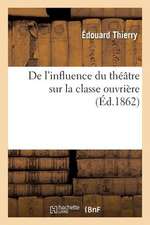Choreography and Narrative – Ballet`s Staging of Story and Desire
Autor Susan Leigh Fosteren Limba Engleză Paperback – 21 aug 1998
Preț: 243.73 lei
Nou
Puncte Express: 366
Preț estimativ în valută:
46.64€ • 48.40$ • 38.99£
46.64€ • 48.40$ • 38.99£
Carte tipărită la comandă
Livrare economică 18 martie-01 aprilie
Preluare comenzi: 021 569.72.76
Specificații
ISBN-13: 9780253212160
ISBN-10: 0253212162
Pagini: 392
Ilustrații: 88 b&w photographs
Dimensiuni: 178 x 254 x 34 mm
Greutate: 0.88 kg
Ediția:New ed.
Editura: MH – Indiana University Press
ISBN-10: 0253212162
Pagini: 392
Ilustrații: 88 b&w photographs
Dimensiuni: 178 x 254 x 34 mm
Greutate: 0.88 kg
Ediția:New ed.
Editura: MH – Indiana University Press
Recenzii
This complex and beautifully written investigation of ballet's development in France from the early 18th through the late 19th century extends Foster's earlier efforts to link dance theory and practice (see Reading Dancing: Bodies and Subjects in Contemporary American Dance, CH, Apr'87; Choreographing History, 1995; and Corporealities, CH, Jun'96). Foster (Univ. of California at Riverside) has become increasingly adept at presenting historical, physical, and theoretical dancing bodies in relation to one another via written texts. This volume situates ballet as a cultural practice and analyzes its progress in relation to economic, political, and social developments--tracing its evolution through specific danced narratives and emphasizing class, gender, and racial identities. Each of the five chapters focuses on an issue relevant to choreography and training. These are augmented by interludes, which contextualize the theoretical issues. Foster's word images awaken the reader to his/her own physicality and to the connections between an individual's lived experience and history. In previous works Foster has moved in this direction; here she negotiates the gap between theory and the actual body with increasing ease and depth. Illustrations are ample and well chosen throughout; the text is supported and enlarged by numerous notes and an extensive bibliography. This work is a landmark in the field and belongs in all libraries serving undergraduate, graduate, and faculty researchers in dance.--S. E. Friedler, Swarthmore College"Choice" (01/01/1997)
Textul de pe ultima copertă
Choreography and Narrative traces development of the story ballet from the early - eighteenth-century fair theatres through the Revolutionary fetes to the well-known Romantic ballets La Sulphide and Giselle. This history charts ballet's separation from opera at mid-century and its emergence as an autonomous art form dedicated to the telling of a story through gesture and movement alone. The site for this historical inquiry is Paris, home to the most popular and lavish dance productions of the eighteenth and early nineteenth centuries. The ballet is analyzed in terms of the training procedures for dancers, the aesthetic goals and responsibilities of choreographers, the institutional frameworks that promote productions, and the expectations and pleasures of dance viewers. Throughout, ballet is approached as a cultural practice intimately connected with political and economic features of French society, a practice whose evolving form bears witness to, as it participates in, the sweeping social changes of the eighteenth and early nineteenth centuries. To uncover the significance of ballet, Choreography and Narrative compares the dancing body with the body as constructed in social dance practices, and also in anatomy, etiquette, painting, acting, and physical education. Choreography is considered as a theorizing of embodiment, one which reflects on the individual, gendered, and social identities of those who dance and those who watch dancing.
Notă biografică
Susan Leigh Foster, Choreographer, dancer, and writer, is Professor of Dance at the University of California, Riverside. She is the author of Reading Dancing: Bodies and Subjects in Contemporary American Dance and editor of Choreographing History and Corporealities.
Cuprins
Illustrations
Preface
Introduction: Pygmalion's No-Boby and The Body of Dance
1. Originary Gestures 13
Painting the situations of the soul Vanishing physicalities
Transgressive gestures Originating the action ballet
The Bank of Grass (le banc de gazon)
Telemaque dans l'ile de Calipso (1759)
On One Side, On the Other; Above and Below
Arlequin Soldat Magicien, ou le Canonier, Pantomime (1764)
2. Staging the Canvas and the Machine
Spectacular dancing bodies Horizontal and vertical perfection
Challenging hierarchy The more sensible machine
Make the Scheme Known
Jason et Medee (1771)
The Invigilant Dancer
Apelles et Campaspe (1776)
3. Narrating Passion and Prowess
Dancing the action A passion for anatomy
The language of dance The self-filled body
The Duel
Mirza (1779)
The Earth Trembles: The Thunder Roars
Le Premier Navigateur, ou le Pouvoir de l'Amour (1785)
Escape into the Heavens
Hercule et Omphale, Pantomime en 1 Acte (1787)
4. Governing the Body
The street, the stage, the nation Muscular geometry
Virtuoso docility Governing the Body politic
The Magically Inscribed Message
Les Royalistes de la Vendee, ou les Epoux Republicains,
Pantomime en Trois Actes (1794)
To Throw Oneself in the Arms Of(Se Jeter dans les bras)
La Dansomanie (1800)
Begin and End with Dancing
Nina, ou La Folle par Amour (1813)
Tell-Tale Evidence
Les Pages du Duc de Vendome (1820)
5. Fugitive Desires
Cruel nocturnal dancing Crafting diversion
Dancing the object of desire The dissolving object of the gaze
Making Merry/Gazing On
La Sylphide (1832)
Maybe Yes; Maybe No
La Voliere, ou les Oiseaux de Boccace (1838)
Dark Spaces
Giselle, ou les Wilis (1841)
Conclusion: Ballet's Bodies and The Body of Narrative
apendix
notes
bibliography
index
Preface
Introduction: Pygmalion's No-Boby and The Body of Dance
1. Originary Gestures 13
Painting the situations of the soul Vanishing physicalities
Transgressive gestures Originating the action ballet
The Bank of Grass (le banc de gazon)
Telemaque dans l'ile de Calipso (1759)
On One Side, On the Other; Above and Below
Arlequin Soldat Magicien, ou le Canonier, Pantomime (1764)
2. Staging the Canvas and the Machine
Spectacular dancing bodies Horizontal and vertical perfection
Challenging hierarchy The more sensible machine
Make the Scheme Known
Jason et Medee (1771)
The Invigilant Dancer
Apelles et Campaspe (1776)
3. Narrating Passion and Prowess
Dancing the action A passion for anatomy
The language of dance The self-filled body
The Duel
Mirza (1779)
The Earth Trembles: The Thunder Roars
Le Premier Navigateur, ou le Pouvoir de l'Amour (1785)
Escape into the Heavens
Hercule et Omphale, Pantomime en 1 Acte (1787)
4. Governing the Body
The street, the stage, the nation Muscular geometry
Virtuoso docility Governing the Body politic
The Magically Inscribed Message
Les Royalistes de la Vendee, ou les Epoux Republicains,
Pantomime en Trois Actes (1794)
To Throw Oneself in the Arms Of(Se Jeter dans les bras)
La Dansomanie (1800)
Begin and End with Dancing
Nina, ou La Folle par Amour (1813)
Tell-Tale Evidence
Les Pages du Duc de Vendome (1820)
5. Fugitive Desires
Cruel nocturnal dancing Crafting diversion
Dancing the object of desire The dissolving object of the gaze
Making Merry/Gazing On
La Sylphide (1832)
Maybe Yes; Maybe No
La Voliere, ou les Oiseaux de Boccace (1838)
Dark Spaces
Giselle, ou les Wilis (1841)
Conclusion: Ballet's Bodies and The Body of Narrative
apendix
notes
bibliography
index



























